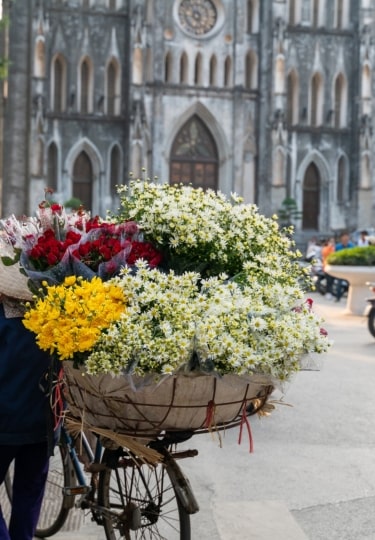No place quite exemplifies what makes Vietnam so special in the way that the Hanoi Old Quarter does.
While Ho Chi Minh City, which many locals still refer to as Saigon, may be Vietnam’s flashier commercial center, the capital city has a charm all of its own. Situated on the shores of Hoan Kiem Lake, the city still boasts tree-lined streets and French-colonial architecture.
The Old Quarter, a tangle of streets that have been a hub for local craftsmen and artisans for more than 500 years, is a marvel to explore. Wander these streets in search of one-of-a-kind souvenirs, exceptional street food, and historic architecture.
Here are 10 unmissable experiences in the Hanoi OId Quarter.
Watch Master Craftsmen at Work on Tin Street
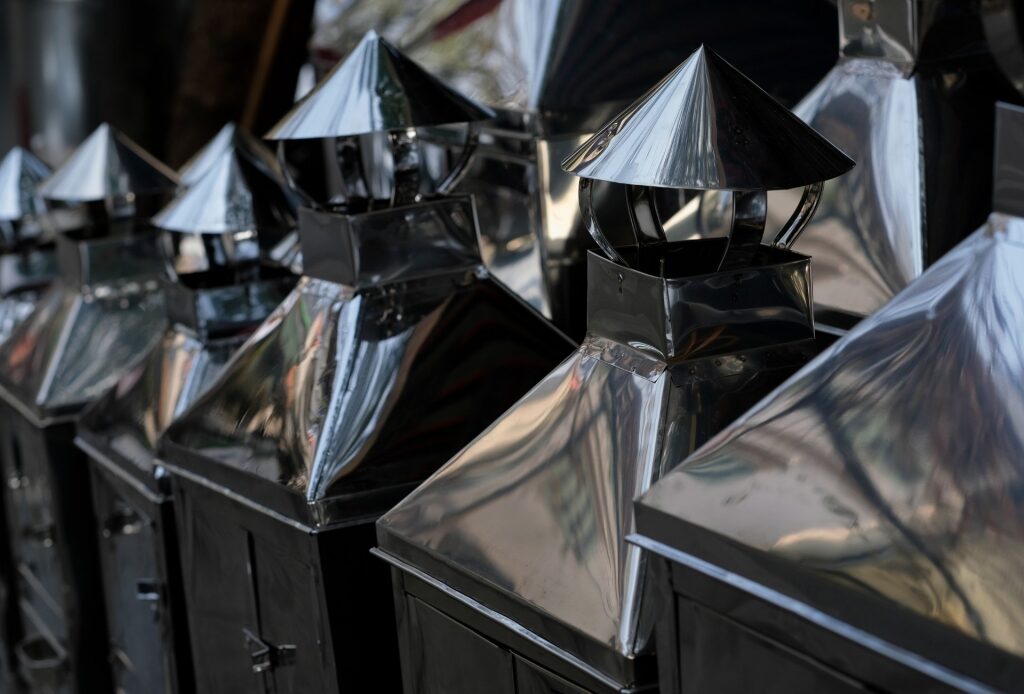
Tins
It may be just shy of 150 yards in length, but Hang Thiec Street, or the “Street of Tins”, is one of the most fascinating areas of Hanoi’s Old Quarter.
As the name implies, this bustling throughway has a long history as a center of craftsmanship. For generations, Hanoi’s master tinsmiths have made and sold everything from kitchenware to candlesticks here.
During the French-colonial period, Hang Thiec Street went by the moniker Rue Des Ferblantiers. While some of Hanoi’s old-time trades have fallen by the wayside with the gradual creep of gentrification, Tin Street’s merchants and artisans continue to churn out household goods and children’s toys all day long.
If you’re shopping for a Vietnamese souvenir with a real sense of place, Hang Thiec Street can be a great spot for one-of-a-kind finds. Even if limited luggage space means that you’re only looking, however, this is still worth a stop to witness artisans at work.
Shop for Fine Silks
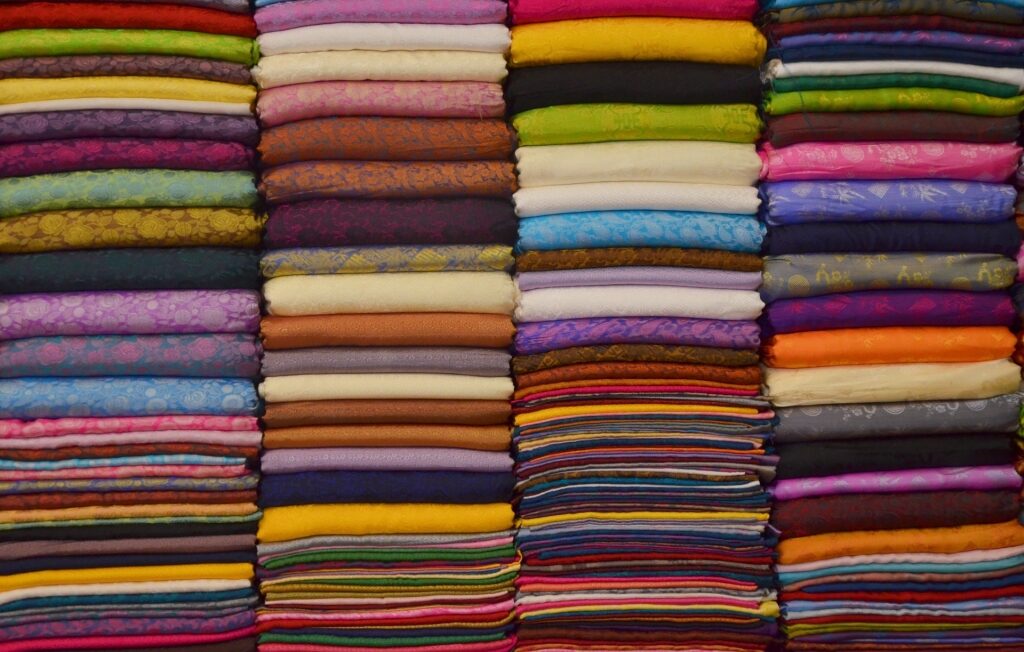
Silk
As with much of Southeast Asia, silk has long been prized in Vietnam for its unique ability to remain cool and comfortable even in sweltering heat and humidity. Unlike many synthetic fabrics, high-quality silks retain their shine and vibrant hues for years or even decades.
For some of the best silks—and textiles in general—make a beeline for Hang Gai Street. Curiously, although silk is one of the most prominently displayed commodities here, the name actually means “Street of Hemp”.
Under French-colonial rule, it was known as Rue de Chanvre, since at the turn of the 19th century, merchants here primarily sold hemp ropes and weavings.
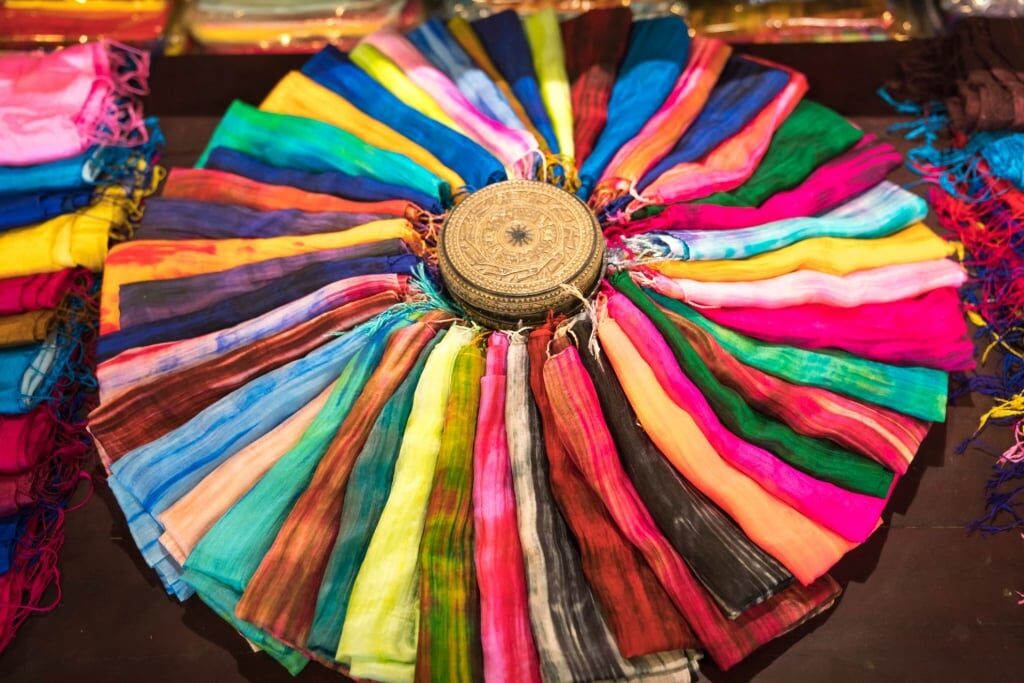
Silk
By the 20th century, Hang Gai Street had become a hub for printing some of Vietnam’s most important newspapers and periodicals. It also sported a dense concentration of silk merchants, a tradition that survives to this day.
At present, the roughly 270-yard street has more than 100 silk shops and tailors—many of whom can whip up a bespoke suit or dress in just 24 hours.
Visiting Hang Gai Street is one of the best things to do in Hanoi. As with Hang Thiec Street, the ambiance is as much of a draw as the wares here. Much of the street’s historic architecture remains intact, giving this street a bit of a timewarp feel.
Sample Hanoi-Style Pho
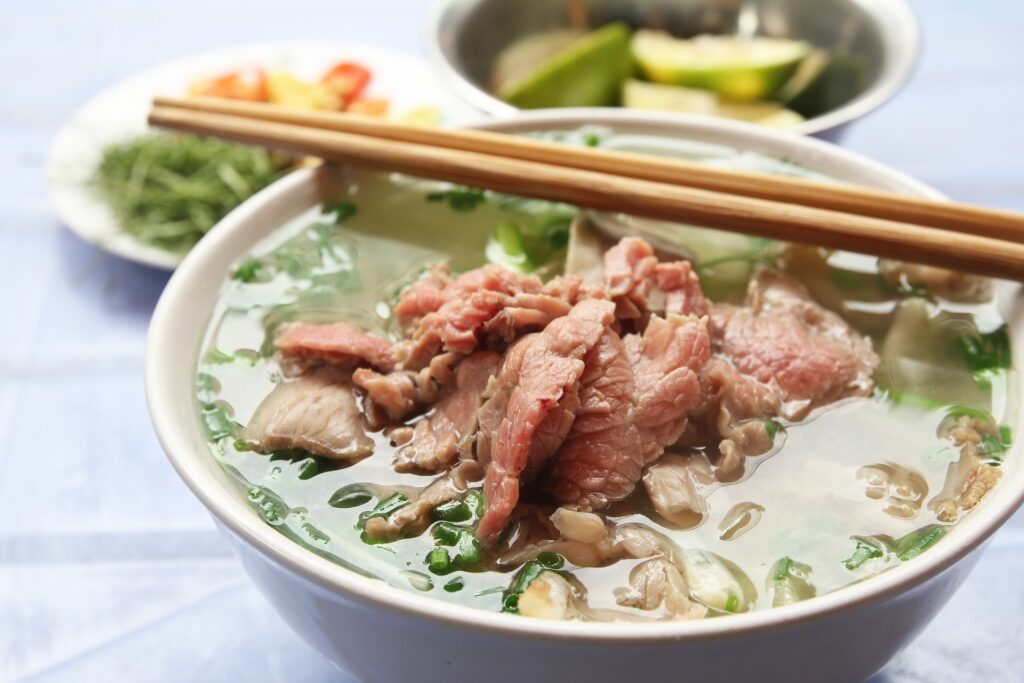
Pho
Pho is serious business in Vietnam, and few dishes exemplify the divide between northern and southern Vietnam like these humble bowls of noodles.
While nowadays the rivalry is largely friendly, locals in Hanoi love to expound upon why theirs is the superior version of pho—and residents of Saigon will say exactly the same.
The truth is that both regional styles have their merits and both cities produce some of the finest bowls of noodles in the world.
Although there is some lingering debate over the precise origins of this popular Vietnamese food, it is generally agreed that Hanoi came up with the concept, which then migrated south and evolved.
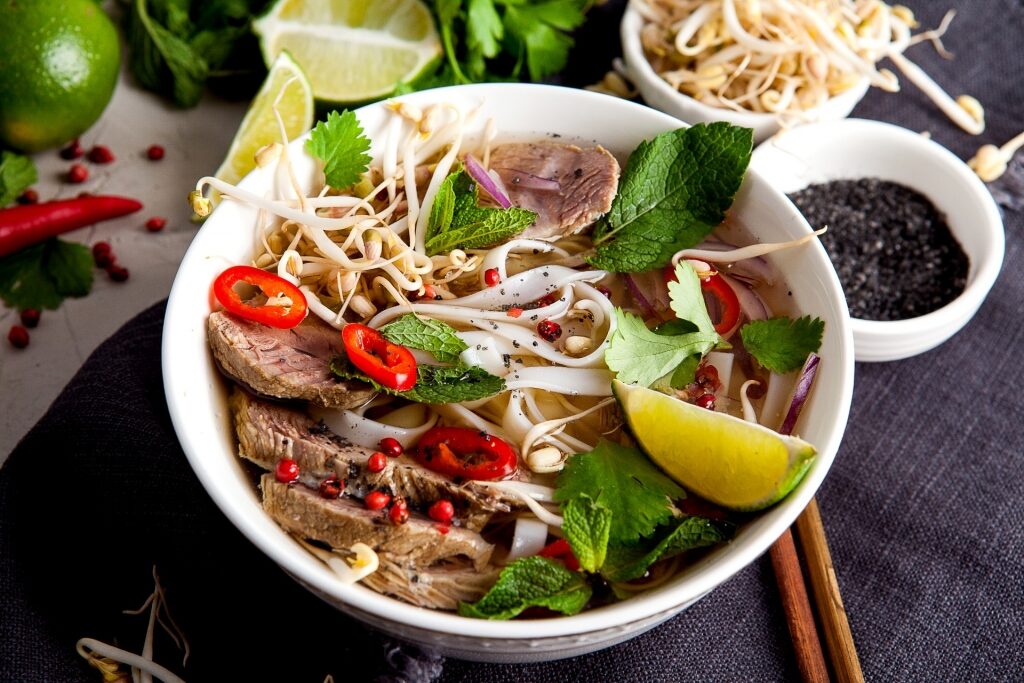
Saigon-style Pho
The primary distinction between the two styles is in the approach: Saigon-style goes gonzo with garnishes and side sauces. Bowls often come brimming with three or four types of meat—rare filet, slow-braised brisket, oxtail, tripe, and meatballs are just a few of the regulars—along with bean sprouts, basil, chiles, and more. Additional sugar and lime give it a delicious sweet-sour flavor profile.
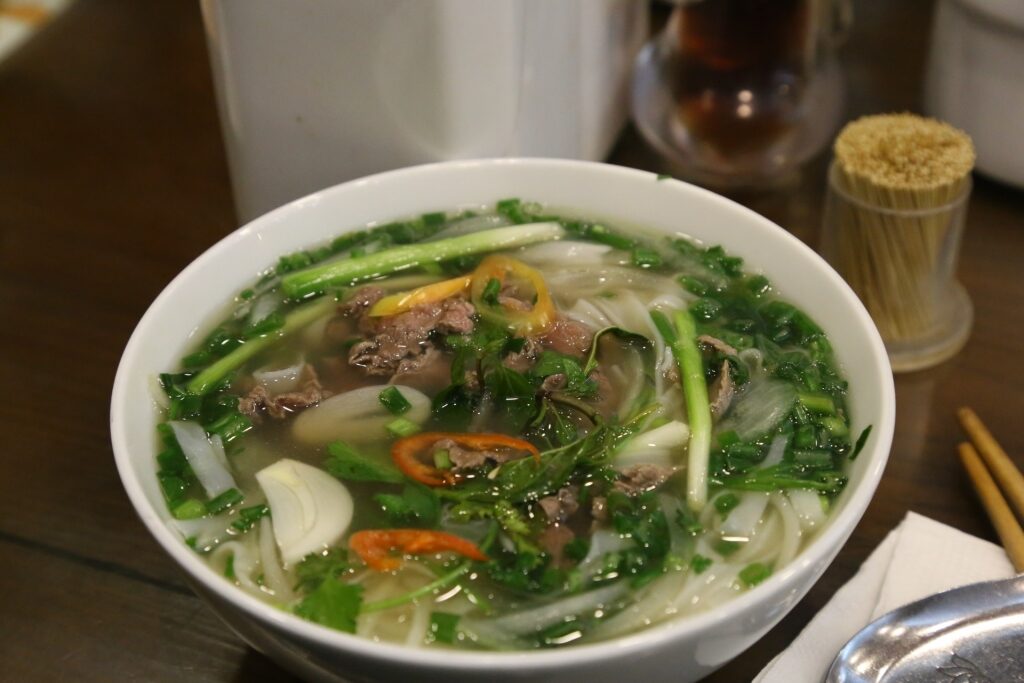
Pho
Meanwhile, pho in Hanoi errs on the minimalist side, with a deceptively spare presentation that belies the incredible depth of flavor. Purists of this style would argue that when the broth is this rich with collagen and flavor, there’s no need for any distracting garnishes.
After simmering for hours—or sometimes days—this fragrant stock is ladled into bowls with tender rice noodles, with perhaps a few slivered scallions. Do as the locals do and order a few quẩy (airy, fried dough sticks) for dunking.
As with bagels in New York or deep-dish pizza in Chicago, competition here is so fierce that quality tends to run high. The best shops have been in the business for generations and have devoted local followings.
A few stand-out options in the Old Quarter include Pho Bat Dan, a self-service joint that has remained virtually unchanged for six decades, and Pho 10 Ly Quoc Su, one of the most famous shops in town.
Watch Spectacular Water Puppetry
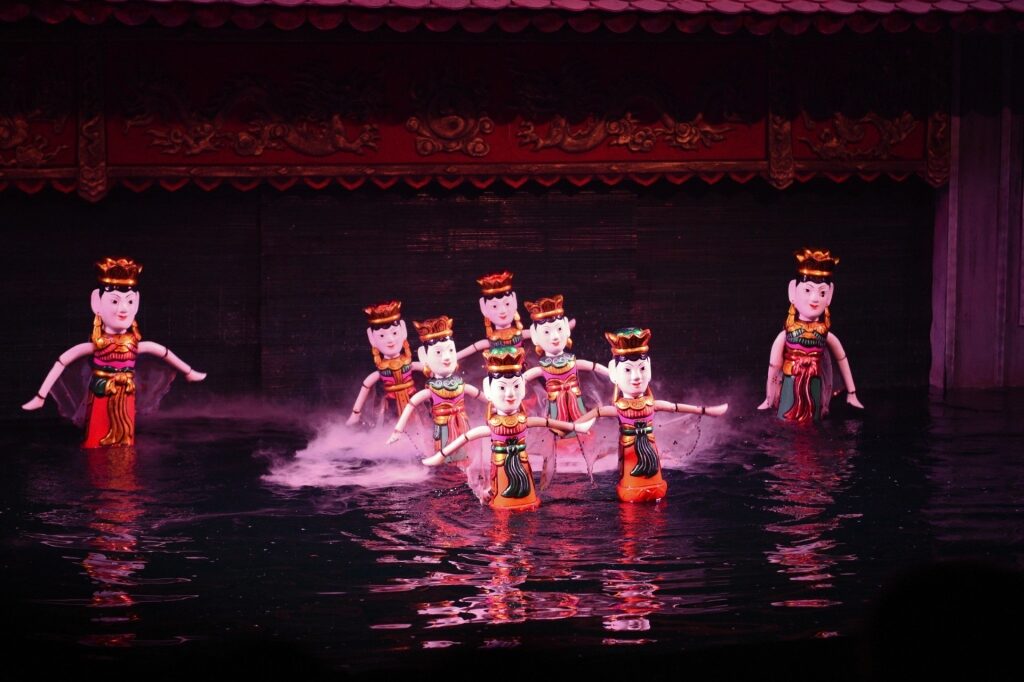
Thang Long Water Puppet Theater
The ancient art of Vietnamese water puppetry dates all the way back to the 11th century, when performers put on elaborate productions for both the Imperial court and everyday people. Some historians speculate that early performances were staged directly in the waters of rice paddies.
Each puppet is meticulously formed from hand-carved, lacquered wood, then suspended over the surface of a pool on a bamboo pole. Through careful sleight of hand, puppeteers imbue these beautifully crafted dolls with a life of their own and create the illusion that they’re gliding over the water.

Thang Long Water Puppet Theater
At Thang Long Water Puppet Theater, modern-day masters keep this tradition alive. The theater is generally considered the premier showcase of its kind in the country and its performances are truly a spectacle to behold.
The dramatic renditions of Vietnamese myths and legends resonate across cultures, making this one of the best things to do in Vietnam for families with children.
Marvel at Historic Temples
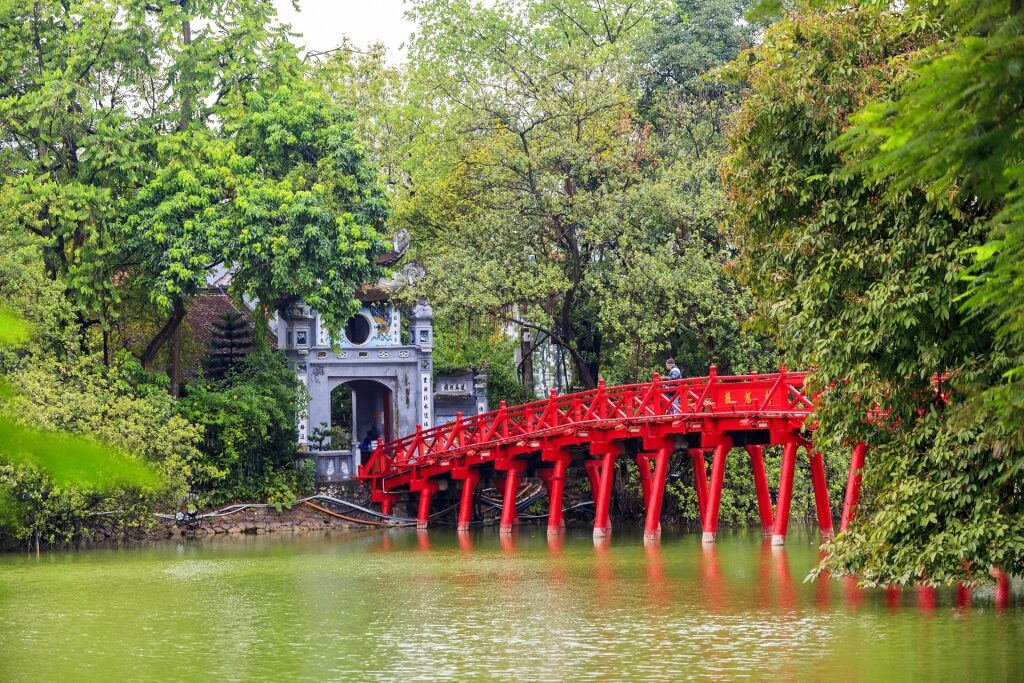
Ngoc Son Temple
When you step into the sacred grounds of Ngoc Son Temple, or “Jade Mountain Temple”, the ambient chaos of Hanoi’s streets might as well be a million miles away.
Located by the placid waters of Hoan Kiem Lake, this temple exudes an air of otherworldly serenity. It was first built in the 19th century in honor of a legendary military general of the Tran Dynasty and has been faithfully maintained ever since.
To enter the temple, you’ll have to cross the scarlet Huc Bridge—a perfect spot to stop and snap pictures.
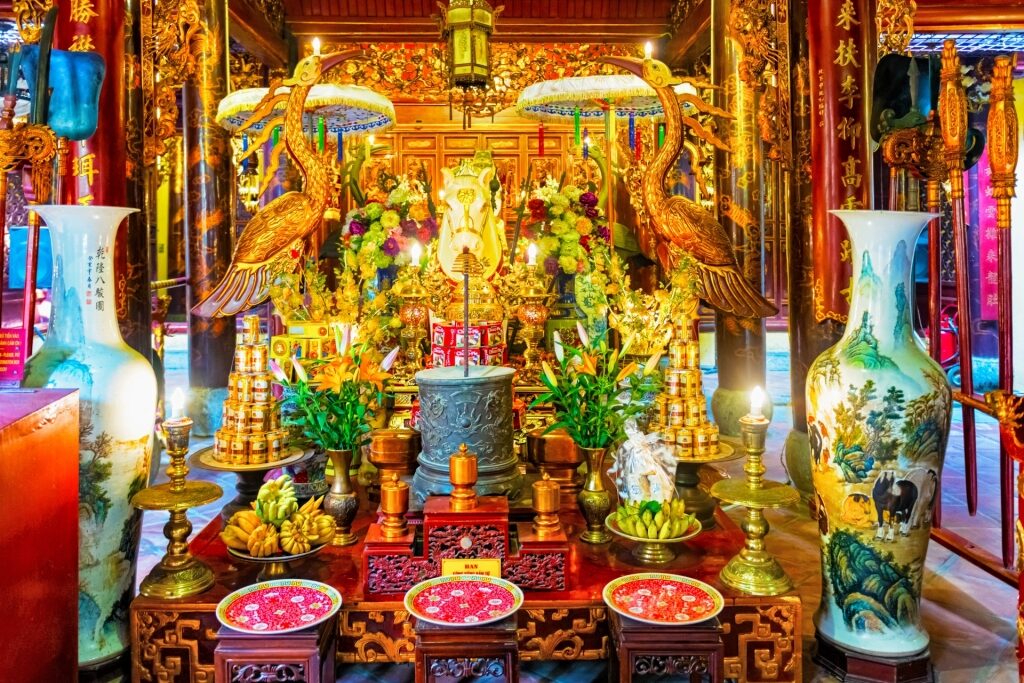
Bach Ma Temple
At the center of Hanoi’s Old Quarter lies the Bach Ma Temple, originally constructed on this site in the ninth century.
The artistry and grandeur of the temple were so striking that even the French colonists opted not to destroy the space. The gilded details and engravings here are the work of true masters.
Read: Best Places to Visit in Southeast Asia
Admire a Cathedral
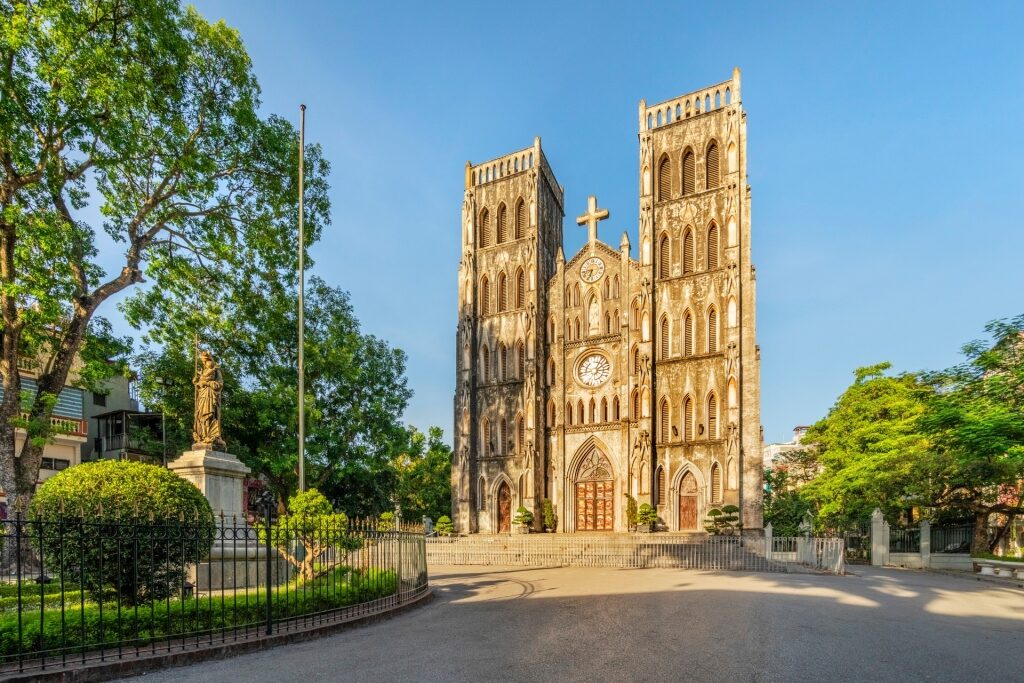
St. Joseph’s Cathedral
Most locals affectionately call St. Joseph’s Cathedral the “big church”. The nickname makes sense given how much this grand edifice stands out in Hanoi’s Old Quarter.
As with many legacies of colonialism in the region, St. Joseph’s Cathedral has a complicated history. By some accounts, a French Catholic constructed it on the site of Bao Thien Pagoda, a sacred place for Buddhists.
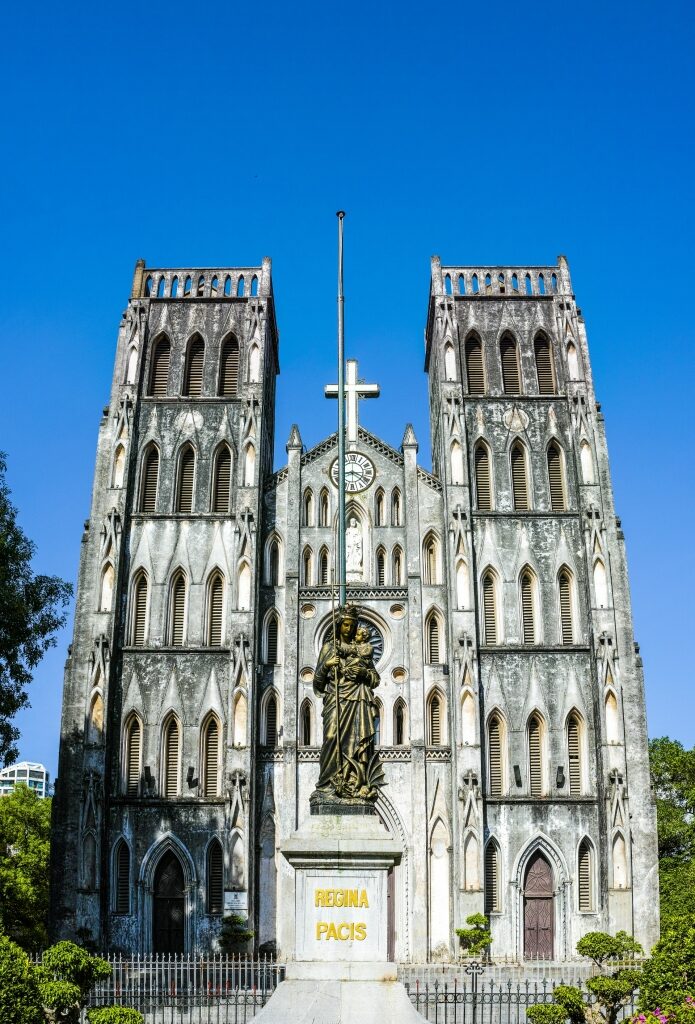
St. Joseph’s Cathedral
St. Joseph’s Cathedral bears a striking—and far from accidental—resemblance to a more diminutive version of Paris’s famed Notre Dame.
Stumbling across something straight out of Victor Hugo in the middle of Hanoi might initially feel jarring, but the cathedral’s gothic architecture and well-preserved stained glass are nothing short of spectacular.
Buy Authentic Silver Bangles & Jewelry

Silver jewelry
Of all the goods contained within the 36 streets that comprise Hanoi’s Old Quarter, the metalwork found on Hang Bac Street, or “Silver Street”, makes for some of the best gifts—especially for anyone with limited luggage space.
This street first became a silver and gold foundry in the 15th century under King Le Thanh Tong. By the 19th century, the foundry was moved to the new Imperial capital city of Hue.
Some of the country’s best silversmiths had little desire to relocate, however, and continued to do business within Hanoi’s Thang Long citadel.
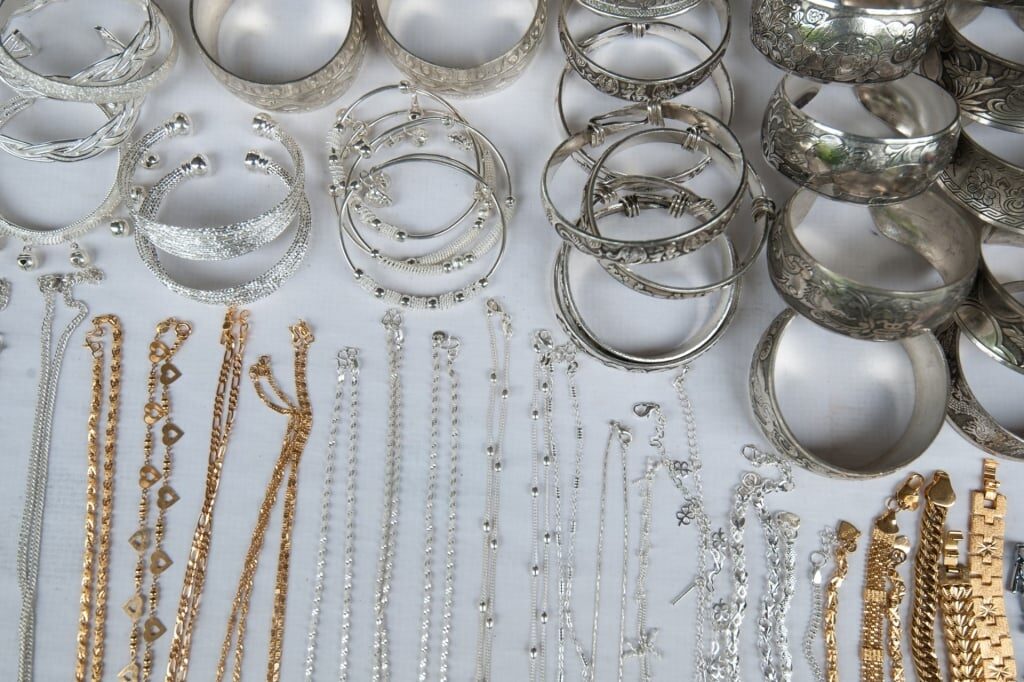
Silver
When French colonists entered the area, they referred to this street as Rue de Changeurs, or the “Street of the Silver Exchangers” and allowed most craftsmen to continue to practice their trade.
Today, it’s home to shops selling all manner of earrings, bracelets, and other glittering accessories. The quality here varies depending on the merchant, but those with patience and a good eye can walk away with some remarkable pieces.
Note that like other streets, some degree of bargaining here is allowed or even encouraged—within reason. Always bargain respectfully and be prepared to either honor the merchant’s final price or politely walk away.
Read: Best Places to Visit in Vietnam
Sip a Cold One

Beer
Bia hoi, or beer culture is central to social life in Vietnam. Although Hanoi tends to run cooler than its southern neighbors, the climate here is still subtropical and a frosty beer is the ultimate antidote to hot, humid days.
Bia hoi translates roughly as “fresh beer” and denotes a light, refreshing, and relatively low-alcohol beer. By most accounts, French colonists popularized beer as a drink in the 19th century and the Vietnamese quickly made it their own.
Although Western-style IPAs, stouts, and other beers have started to gain some traction in Vietnam, thanks to a handful of excellent local craft breweries, bia hoi is still very much the drink of the people.
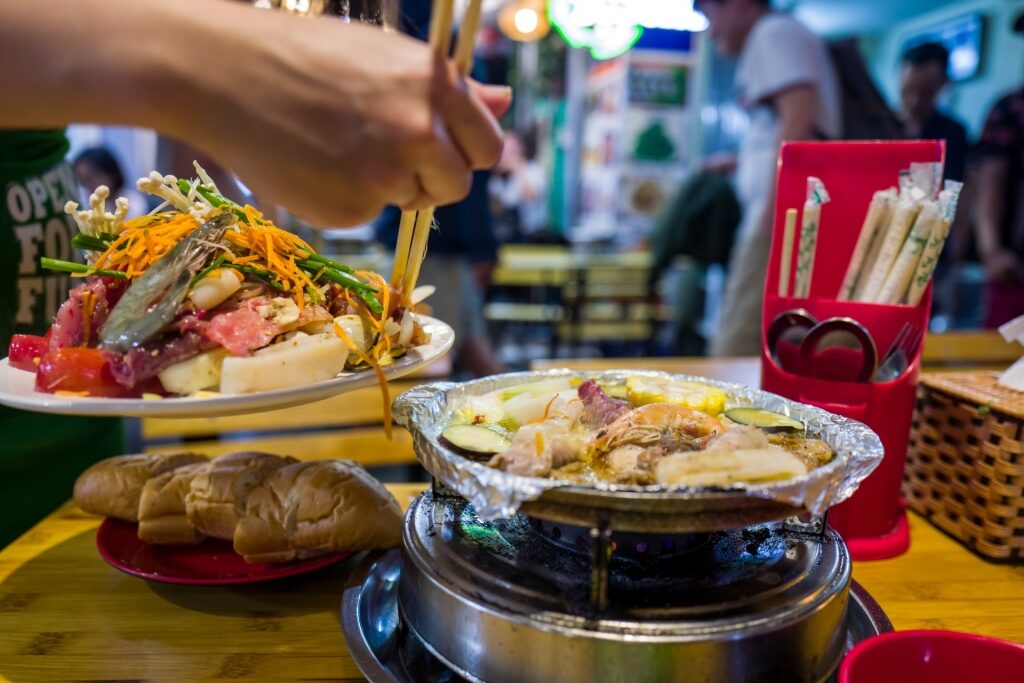
Bia Hoi Junction
For the full experience, head to Bia Hoi Junction, a lively cluster of outdoor bars and stalls serving cold beer at affordable prices. Pull up a plastic stool, order a bottle, and strike up a conversation with some of your neighbors.
Sample Local Street Food
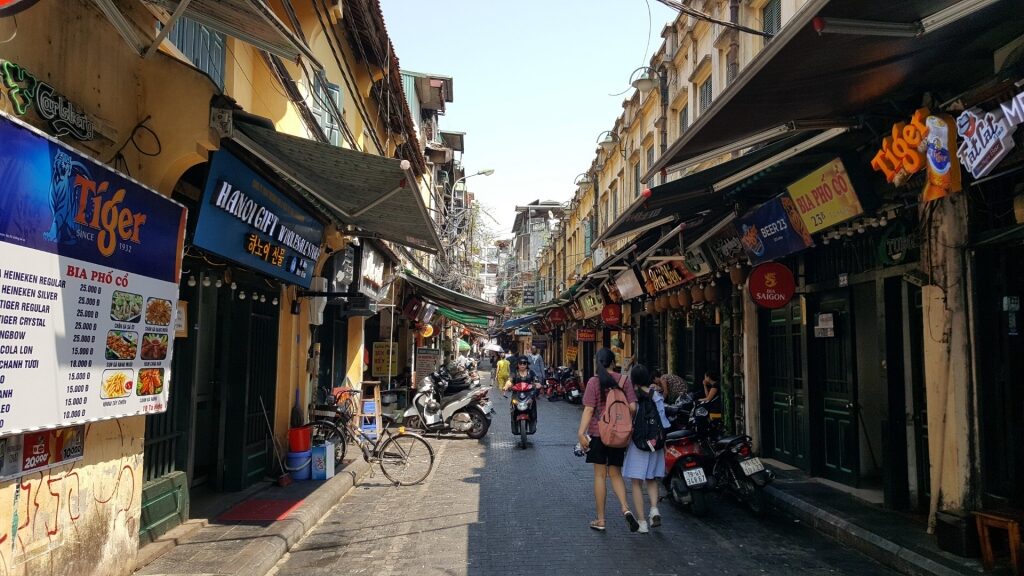
Ta Hien Street Photo by choi kwangmo on Wikimedia Commons, licensed under CC0 1.0
Before or after quenching your thirst at Bia Hoi Junction, fuel up on street food at the neighboring Ta Hien Street.
Sometimes known as the “street that never sleeps”, this vibrant area is vital to Hanoi’s thriving street life. On any given evening, expect to see a mix of international travelers and young Vietnamese hipsters converge in pursuit of excellent eats.
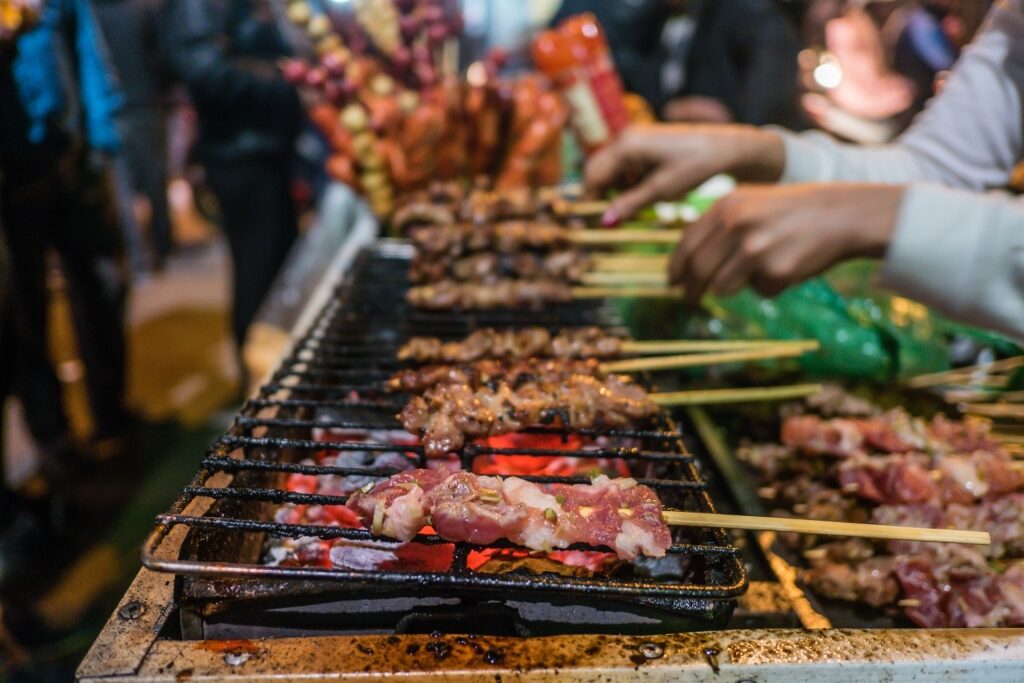
Grilled chicken
Western-style snacks like French fries and fried cheese sticks often share table real estate with local specialties like vermicelli piled with tender braised beef and broth perfumed by cinnamon and star anise.
Follow the plumes of smoke from small charcoal grills for excellent grilled chicken, often brushed with a glossy, honey-tinged glaze. Birds are served whole, but crispy wings and legs also make regular appearances, as do steamed chicken feet.
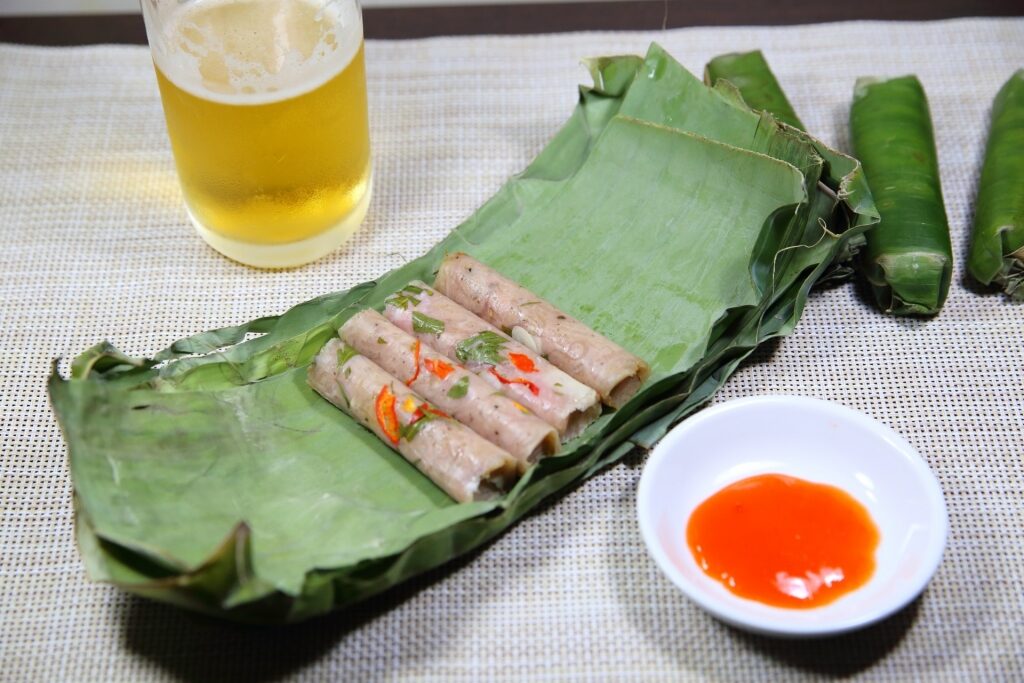
Nem chua
Keep an eye out for nem chua, a type of fermented pork sausage with a pronounced umami funk, often studded with garlic and chiles.
Visit Dong Kinh Nghia Thuc Square
Centered around a modest fountain, Dong Kinh Nghia Thuc Square is the de facto public plaza and meeting point for the neighborhood. Restaurants, bars, and coffee shops line the perimeter.
This is where the streets of Cau Go, Hang Gai, Dinh Tien Hoang, Le Tha, and Hang Dao all cross paths. Some have referred to it as the heart of the city and it would be a mistake to visit Hanoi without passing through here, particularly in the later afternoon and evening.
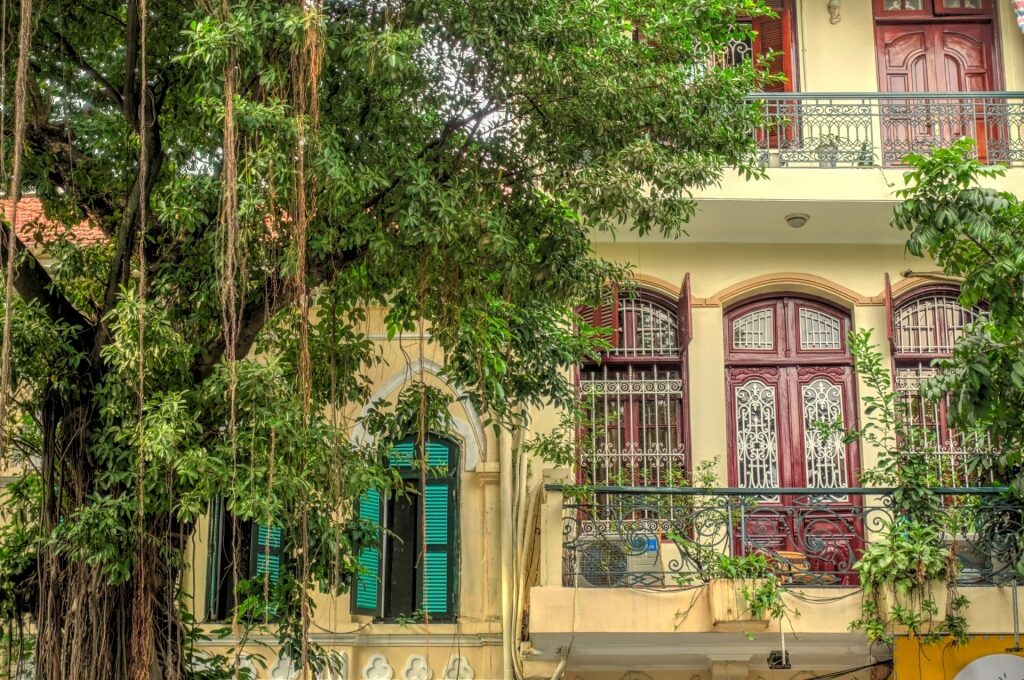
Old Quarter
A cruise allows you to discover the best of what Vietnam has to offer, from the sights and sounds of Hanoi’s Old Quarter to the limestone karsts of Halong Bay and the beaches of Danang. Browse our Hanoi cruises and book your next voyage today.
